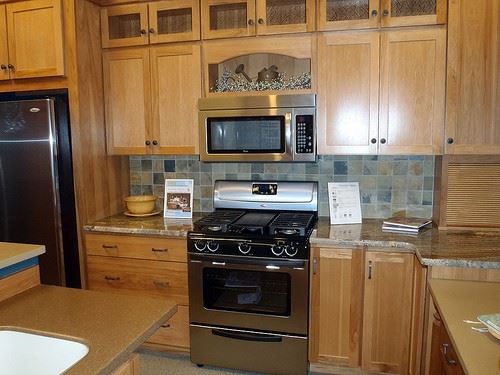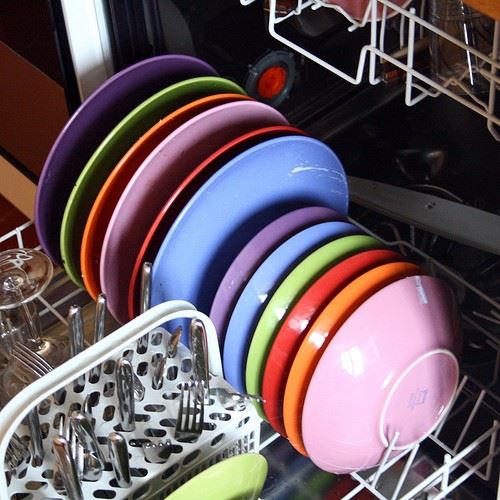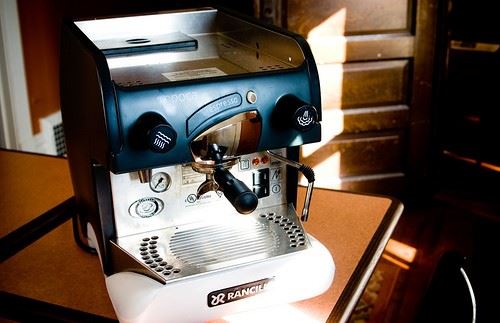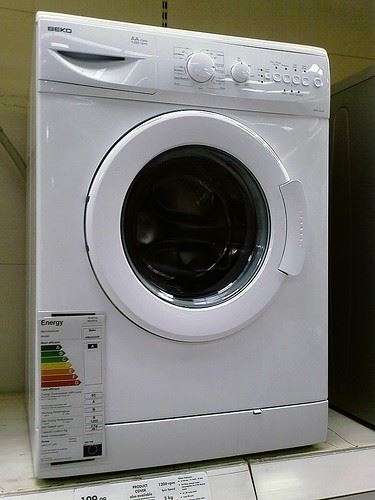Next Day Delivery Available
Choosing a New Home Appliance after the EU Ban

Image by williamskitchenbath
The kitchen is one of the most frequently used spaces in the house, combining aesthetic appeal with indispensable practicality.
With Brussels recently following in the footsteps of the US by introducing new regulations (Ecodesign Directive 2009/125) which reduce the amount of electricity household appliances use – making them more energy efficient – now couldn't be a better time to evaluate what to look for in our home appliances.
There's been much hyperbole and bile-frothing furore recently over the EU's decision to limit the wattage of vacuum cleaners 1,600 and to 900 watts in September 2017, and it's rumoured toasters, kettles, hairdryers and lawnmowers are next for the wattage chop.
It is part of an environmental and energy efficiency drive that aims to reduce the level of energy consumption by 30% by 2030.
But whether it's a dishwasher, washing machine or coffee maker, when it comes to choosing a new appliance there are few essential things you need to consider.
Dishwasher

Image by andrea castell
When you take into account the fact that the average family spends up to 250 hours a year washing up, it makes you wonder why they don't ditch the marigolds and Fairy Liquid and sprint down to the nearest Currys for a dishwasher.
Of course, whether it's worthwhile investing in a dishwasher depends on the amount of washing up you do, so give a few minutes to consider how much washing up you do on a daily and weekly basis. To this end, if you decide on purchasing a new dishwasher, don't invest in one that's too big – using a dishwasher that's only half full can prove to be expensive. If you've got a small family, space-saving worktop dishwashers are an ideal solution.
Because they use less water than washing up by hand, a dishwasher – if properly used – can be environmentally friendly as well as being a little lighter on the wallet.
Dishwashers operate on several programmes in the same way as washing machines, so, as with them, the more you pay the more you get. The programmes are:
- Normal wash, which is the general setting for most loads and washes everything at 5 degrees centigrade
- Timed wash, which enables you to take advantage of low-cost electricity at night
- Economy wash, which uses the minimum amount of power and water to clean the dishes
- Intensive wash, an extremely hot wash specifically for those more difficult-to-clean pots and pans
- Quick wash, which just basically gives them a quick rinse
- Glass wash, which, as the name suggests, is just for glassware which could be damaged if washed in high temperatures.
The current Eurolabel system works to determine the efficiency of dishwashers and operates on a classification system from A to G, A being the most energy efficient.
Just as crucial as the energy efficiency and practicality of the dishwasher is the internal rack, so check it will accommodate a lot of plates, as well as having space for pots and pans, so get the maximum clean out of minimum use. Racks should also be removable – either completely or in part, to facilitate larger items.
Also, it's important to check if there are indicators signifying that the salt content is low, as dishwasher salt is used to make the water soft which, in conjunction with a rinse aid, makes the washing smear-free and easier to dry.
Tumble Dryer
Tumble dryers used have vents which need to be fitted to a permanent outside vent – or at the very least a hose you can hang out the window.
Modern dryers preclude the need for a vent pipe, with the hot, wet air instead condensing at the bottom of the machine with the extraneous water being either emptied or plumbed into a drain. Condensing dyers – although a little more expensive - remove the need for a vent pipe and hole in the wall and therefore gives you greater choice as to where you can put them.
Family-sized tumble dryers can usually take a full washing machine load, while smaller versions are more suited to people who prefer to hang out their washing and don't need it straight away.
You can set a pre-timed dial in accordance with how long you think it will take to dry the clothes, although a lot of modern machines have a sensor which cuts out when it detects the clothes have dried out.
Fridge, Freezer or Fridge Freezer
Before investing in a fridge, think about what you need from it. A fridge with a freezer compartment lets you keep already-frozen food for a certain period of time, depending on the fridge rating.
A 4-star rated fridge is the only one where you can freeze fresh food because the temperature drops below -18 degrees, so if you need to freeze larger amounts of fresh food you'll need a fridge freezer or freezer.
Conventional modern fridges vary in inside temperature, but all being cooler at the top than the bottom. Some of them have a dynamic cooling system which constantly circulates the cool air and keeps the temperature at an average 4 or 5 degrees, keeping the food consistently cool, even if the door's left open for a period of time.
It's also worth looking at the average contents of your weekly shop and thinking about things such as whether you need an egg rack, salad drawer, and glass shelves, the latter of which are particularly effective at protective food from dripping/leaking bottles.
Coffee Machine

Image by jakellefer
Coffee is big business, with the multinationals and independents clambering over themselves to exploit the nation's insatiable appetite for those little brown beans. Not content with getting their caffeine kick from the shops, more and more people are buying their own coffee machines for their instant, early morning hit. And the days of instant coffee are all but gone, replaced instead by cappuccinos and expressos.
Cappuccino and expresso machines come in two models: pressure and pump. Pressure machines boil the water in its chamber which builds up pressure and steam, and when the pressure is high enough it forces the boiling water through the coffee. A pump machine has a thermostatically controlled boiler and a separate tank, and heats the water to the ideal coffee temperature (between 85 and 92 degrees centigrade) and pumps it through the coffee granules.
As hard core coffee aficionados will know, the main types of coffee are:
- Americano – Expresso in hot water
- Cappuccino – one third Espresso, hot milk and frothy milk
- Latte – 1 part Espresso to 6 of hot milk
- Mocha – hot chocolate with a dash of Espresso
Washing Machine

Image by zzpza
Again, in terms of practicality and usability, you have to think about how often you use your washing machine as it's pointless splashing out hundreds of pounds if you're only going to use it once every couple of weeks.
Other things to consider are whether you have the space for it, whether you'll need a front or top loader, and, crucially, how much you can afford. The bottom line is that the purchase should be dictated by your own circumstances and not how convincing the salesman is.
A front loader is designed to fit under a worktop and will generally wash more clothes than a top loader.
Today's washing machines also come with a myriad of programs, so choose one with the best functions that suit your lifestyle. Some of the programs include an automatic function, which works out how much water is required and how long it should wash it depending on the load; easy iron options which reduces the amount of wrinkles, time starts which use electricity more economically, and programs for more delicate clothes.
Eurolabel grades are used to give an indication of the performance of each washing machine, with A being the best, to G, and E representing an average machine. F and G ratings don't necessarily mean these machines are very bad, rather they're not the best buys if you're looking for energy efficiency, water and electric consumption.
Some washing machines have an AAA rating, which means they offer superlative functions in every possible way, although inevitably for such high-quality, energy-saving machines you'll have to dig a little deeper into your pocket.
You can also stack a washing machine and tumble dryer on top of each other, which is particularly practical in terms of saving space as well as providing a more aesthetically pleasing, uniform look.
As a final note, it's best to fit isolation valves when fitting waste and water supplies so you can easily turn off the water supply if you need to.
But even with the best intentions to adhere to the EU's environmentally friendly plans to save money and energy, it's inevitable that any domestic appliance, even if treated with plenty of TLC, will break down from time to time.
At Ransom Spares, we have spares for all the major appliances, including dishwashers, washing machines, and cookers and hobs, as well as offering plenty of sound, practical repair advice.
By Lee Gilbert
Category: Articles, News & Tips






 By Lee Gilbert
By Lee Gilbert On 29th Sep 2014 at 09:31
On 29th Sep 2014 at 09:31

No Comments